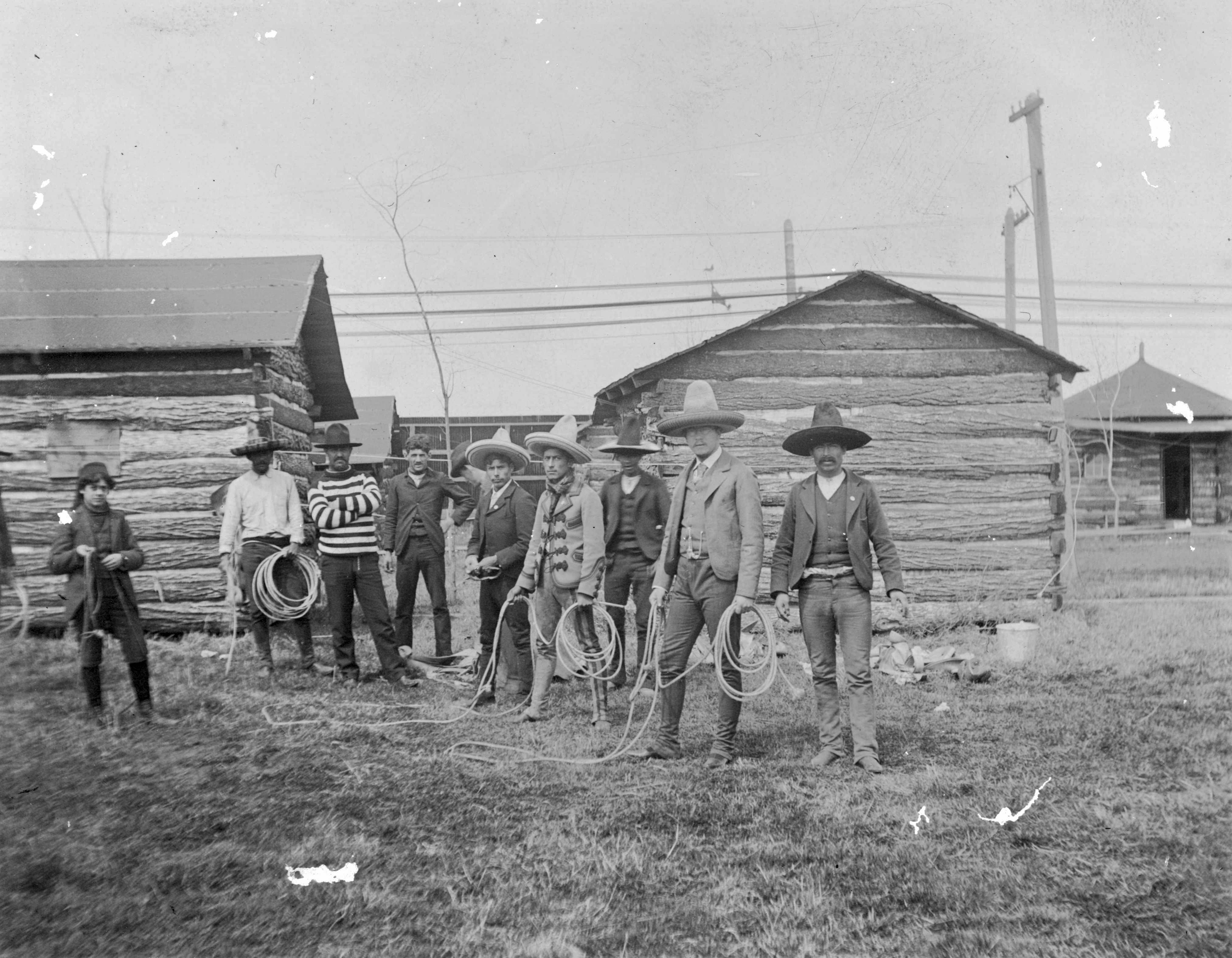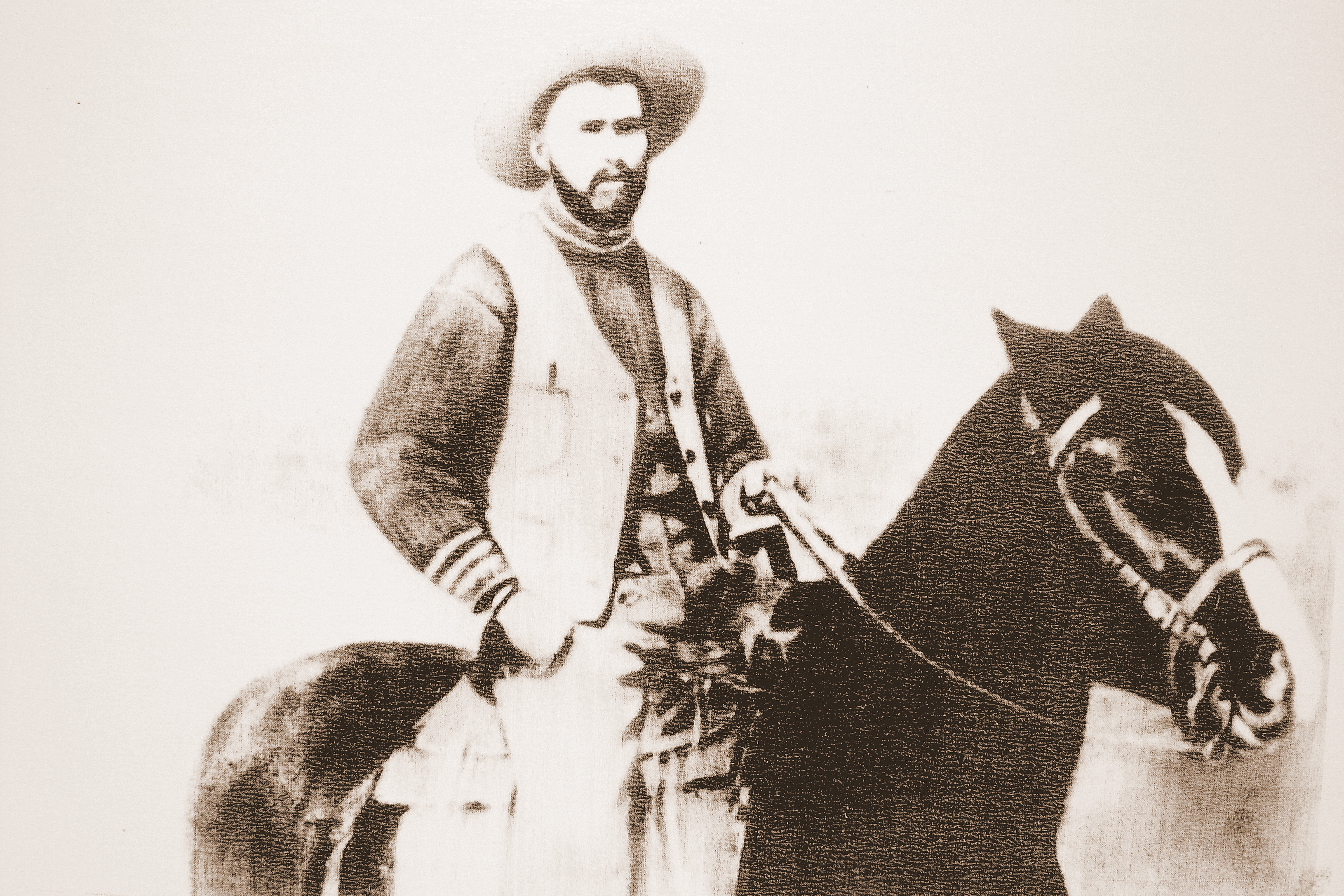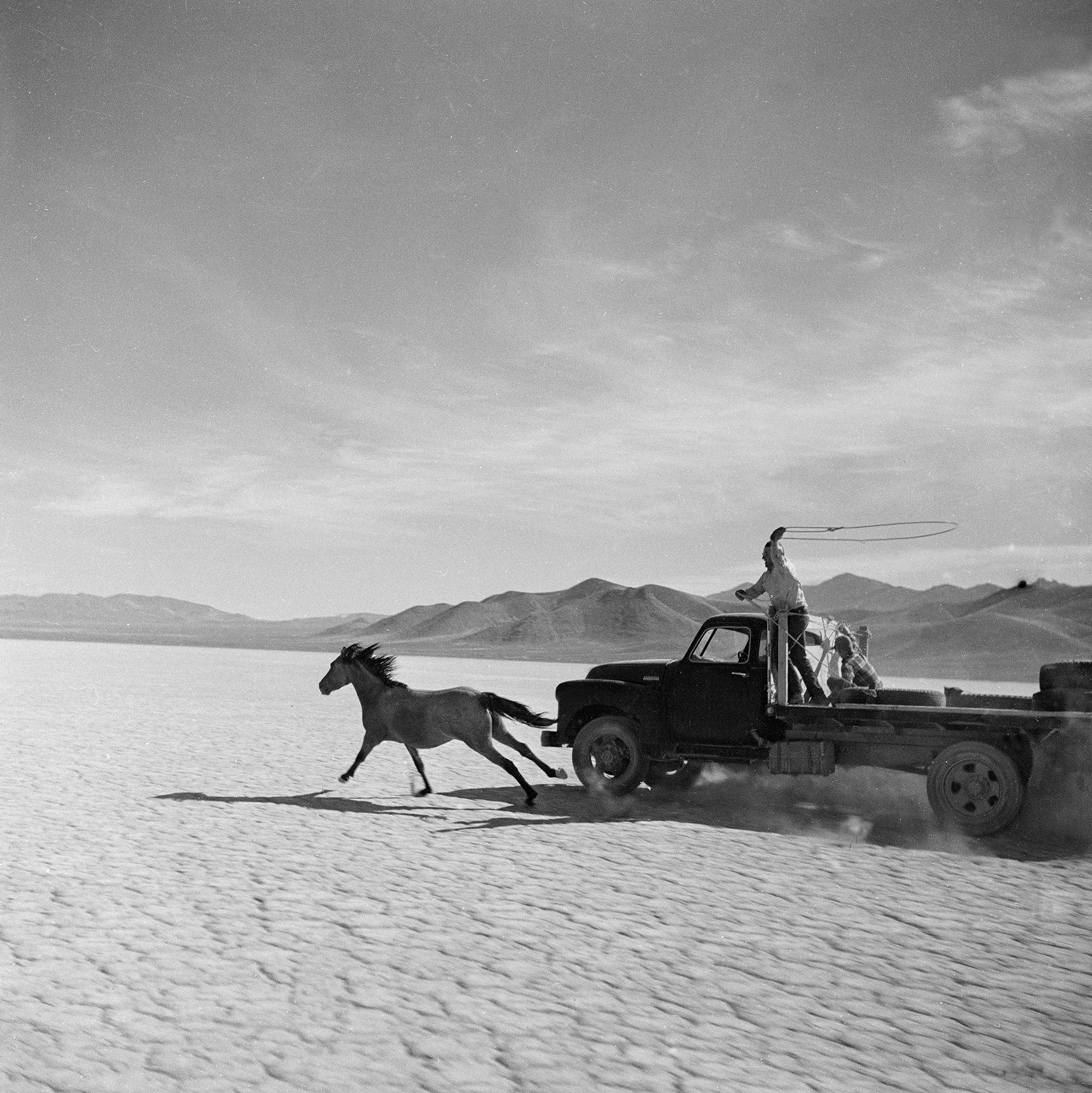
Story
The Cowboy: Reflections of a Western Writer
Near the end of his decades-spanning career as one of the best-selling Western authors of the 20th century, Louis L'Amour takes a look back on the history and mythology of one the most enduring icons of the American West.
To celebrate the 100th anniversary of The Colorado Magazine, we’ve selected some of our best articles from the last hundred years to republish online. This article was originally published in the Winter 1980 edition, and has been reproduced here as it was originally published. Some images have been added.
Teddy Blue, who was a real cowboy, said that the only two things a cowboy feared were a decent woman and being set afoot.
Fortunately, due to men like Teddy Blue and fifty others we could mention, we do not have to rely on fiction for our picture of the cowboy. We know who he was and what he was like. We have his picture clearly drawn by men who were cowboys or who were there at the time, by women who loved them, married them, and sometimes survived them.
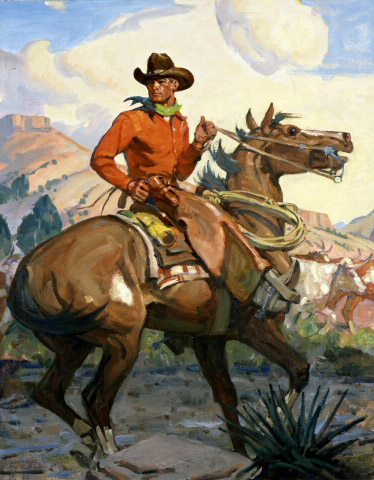
Something Suspicious Western Pulp Magazine Cover—Author, A. R. Mitchell, Artist, Leonia, New Jersey, 1930
In fiction the cowboy is usually portrayed as an illiterate, and no doubt many were but just as many were not; some had excellent educations, going on to achieve a reputation in other fields. Granville Stuart, Eugene Manlove Rhodes, Charlie Siringo, and many others have told of the cowboy’s reading habits.
No other type of man has been the subject of so many written words as the American cowboy. Yet he not only inspired literature and produced literature, he was to a considerable extent a product of his literature.
From the very beginning the cowboy was, in the minds of those who wrote about him, a dashing and romantic figure. Moreover, although he would never have admitted it, that was how he saw himself. He knew the realities but believed the illusion. He was, after all, A Man on Horseback.
The Bedouin of the desert, the armored knight, the Cossack–all were figures of romance. The cavalry charge is the essence of poetry, the bayonet charge is not.
A few years ago an eastern writer with a great air of debunking it all commented contemptuously that a cowboy was nothing but a hired man on horseback. Of course. What else? The cowboy knew his job and was happy with it. In most cases he wished for nothing more. He wanted, above all, to be considered a top hand.
Give him a job to do while mounted and he would work from daylight to dark. Ask him to dig a posthole and you had a sour, discontented man. He would dig the posthole but he did not have to like it and he did not.
He had to know horses and cattle, and he needed skill with a rope. His average working day during the early years on the range was fourteen hours, from can-see to can’t-see. His night’s sleep was usually six hours but when driving a trail herd he could expect to do a stint on night guard, usually about two hours.
His work consisted of rounding up and branding cattle, gathering strays, riding fence, pulling cattle out of bogs, treating cuts or abrasions for screwworms, building and repairing fences, cleaning out water holes, or whatever needed doing.
In the open-range days he carried a running-iron and branded whatever he found on the range. If an unbranded calf was running with a branded cow he usually applied her brand to the calf. If there was any doubt he branded the home ranch, whatever it might be. After a few years when fences became common the running-iron disappeared and the stamp-iron was introduced and most of the branding was done during the seasonal roundups.
Over the years the character of the cowboy’s work changed considerably. In the earliest days the cattle were Longhorns and they were unlike any cow critter around today. Longhorns were wild animals. Often they hid in thick brush, coming out to feed only at night. They were big, strong, and fierce and would fight anything that walked. As long as a rider was in the saddle he was reasonably safe. Caught afoot, he had two choices–run for his horse and get into the saddle or shoot the steer. Usually he elected to run, as the boss did not look with favor on dead steers, but many a cowhand has blessed the Good Lord and Sam Colt for the pistol he carried.
The saddle stock on most of the ranches consisted of half-broken mustangs. They were small horses, incredibly tough, very agile, and soon developed an instinct for working cattle.
Later, when fences came and ranches became settled operations, horses were bred for the job and the saddle stock became better. It also needed more careful handling. On northern ranges the horses were larger for they were often required to buck snowdrifts and harsher conditions.
Stories of the West are said, by those who do not read them, to be about cowboys and Indians. Actually, that is rarely the case. More often the protagonist is a ranch foreman, a town marshal, a Texas Ranger, an army officer, or a scout for the army. When a cowboy is the protagonist he is usually a drifter, and very rarely is shown at work, doing what has to be done on a ranch.
Usually cowboys were between fifteen and twenty-five years of age, although some were as young as twelve or as old as eighty. By and large they were a hardy breed. Their work was hard, brutal, and demanding. Their food was, in the earlier years, largely beef, beans, and cornbread with molasses for sweetening.
The cowboys were, as a rule, Anglo-Saxon or Irish (as were the bulk of the early pioneers) and they came from every state in the Union and a half dozen European countries. The first cowboys were Texans who learned how to handle cattle from the Mexican vaqueros who had begun cultivating the art in the time of Cortez.
Boys from the border states soon added to their number. From Illinois, Iowa, Arkansas, Missouri, and Tennessee, to name a few, boys came to ride north with the trail herds. Boys in those states grew up handling stock, and a point to be remembered is that they grew up hunting meat for the table.
Often those who comment on shooting in the West fail to realize that most boys in the border states grew up shooting. If they did not kill their meat they did not have it to eat, and as ammunition could not be wasted in plinking away at any target that appeared, they took their time and made every shot count. The pioneer boy was usually an excellent shot who wasted no ammunition. Many a girl shot equally well, with Annie Oakley as an example. She began shooting game for her own table and then began hunting for the market.
One professor at a western university has commented that “it was generally agreed that the six-gun was a hard gun to shoot accurately.” This is absurd. Among the many men I have known who used such guns, none would agree. There are many dead men who wish it had been true.
The six-gun, for its time, was an exceptionally efficient gun, and in the hands of a man who knew his weapon, his bullet would go exactly where he wished. The Grand Duke Alexis, after seeing the Smith and Wesson .44 demonstrated by Buffalo Bill Cody, ordered 250,000 of them for the Russian army.
There are literally thousands of cases to demonstrate the effectiveness of the cowboys’ marksmanship. There were bad shots then as there are today, but most of the gunfighters served their apprenticeship as buffalo hunters, practicing their marksmanship day after day. Quanah Parker and his Kiowa-Comanche warriors discovered just how well they could shoot at the Battle of Adobe Walls, where twenty-eight buffalo hunters stood off hundreds of his braves.
Cowboys came from everywhere. Teddy Blue, who left an account of his cowboy life in the western classic We Pointed Them North, was born in Norwich, England, and was a typical cowboy. Frank Collinson, whose Life in the Saddle is another true story of western life, came from Yorkshire, England. Jeff Milton, a cowboy who became a famous western peace officer, was a son of the governor of Florida.
Unfortunately, from the very first the cowboy and the West in general have suffered from the writings of various “authorities” who assume certain things to be true because they are, to their thinking, logical.
The cowboy’s attitude toward women, for example, was far different from present attitudes. If we are to understand his times we must know something of his education, family background, and the customs of his time as to what was acceptable conduct and what was not. The cowboy must always be measured by the standards of his time, not ours. Conditions and manners were vastly different.
Moreover, many who presume to write of the western story take altogether too narrow a view of what is “Western” and what is not. The western story is one of the few truly American forms of literature; no other has so captured the world’s imagination, and the stories can be found everywhere.
Not only has the western story and film excited readers and viewers everywhere, but western attire has also captured the imagination. Its clean lines and distinctive style have an appeal of its own. Western jeans, boots, belts, and shirts are eagerly sought after, although to the cowboy himself his clothing was simply the most efficient for the man and the work he had to do.
A cowboy’s clothing was just what he could afford. In the beginning years he wore any cast-off clothing he happened to have, but the clumsiness of heavy boots or shoes in the stirrup soon brought change. Many items of his clothing were adapted from those already proven by the Mexican vaquero.
The boot with the pointed toe enabled his foot to slip quickly and easily into the stirrup, an important attribute when riding the half-broken or spirited stock on the ranches. The high heel kept the boot from slipping through the stirrup and gave him more to dig in with when roping on foot, as was occasionally the case.
There has been much talk about how unlike the real thing some of the more modern-day costumes are, but you can bet there were few cowhands who would not have worn modern cowboy shirts, boots, and jeans if they had been available.
His first item of expense was his hat, and he wanted the best he could afford. In fact, he often wore both hat and boots that he definitely could not afford. His next major item of expense was his saddle, and here again the cowboy bought the best he could find for the money he could scrape together.
Women were not as scarce on the western frontier as we have been led to believe. Many of the homesteaders had daughters—as did the ranchers themselves. There were always women in the towns, although the cowboy’s opportunities for meeting them were few. Dances were not infrequent and there were box suppers from time to time. The red-light districts in most western towns, however, did a brisk business.
Necessarily, the writer dealing with the West will choose its more dramatic moments. Usually, the cowboy of fiction is not too dissimilar from the real thing except that the working cowboy spent most of his time doing just that—working.
Western stories began to be written almost as soon as the West came into being. The mountain man, the cavalry soldier, and the cowboy were exciting material for a writer, and even before this the Indian and the settler had been written about by Chateaubriand and dozens of others.
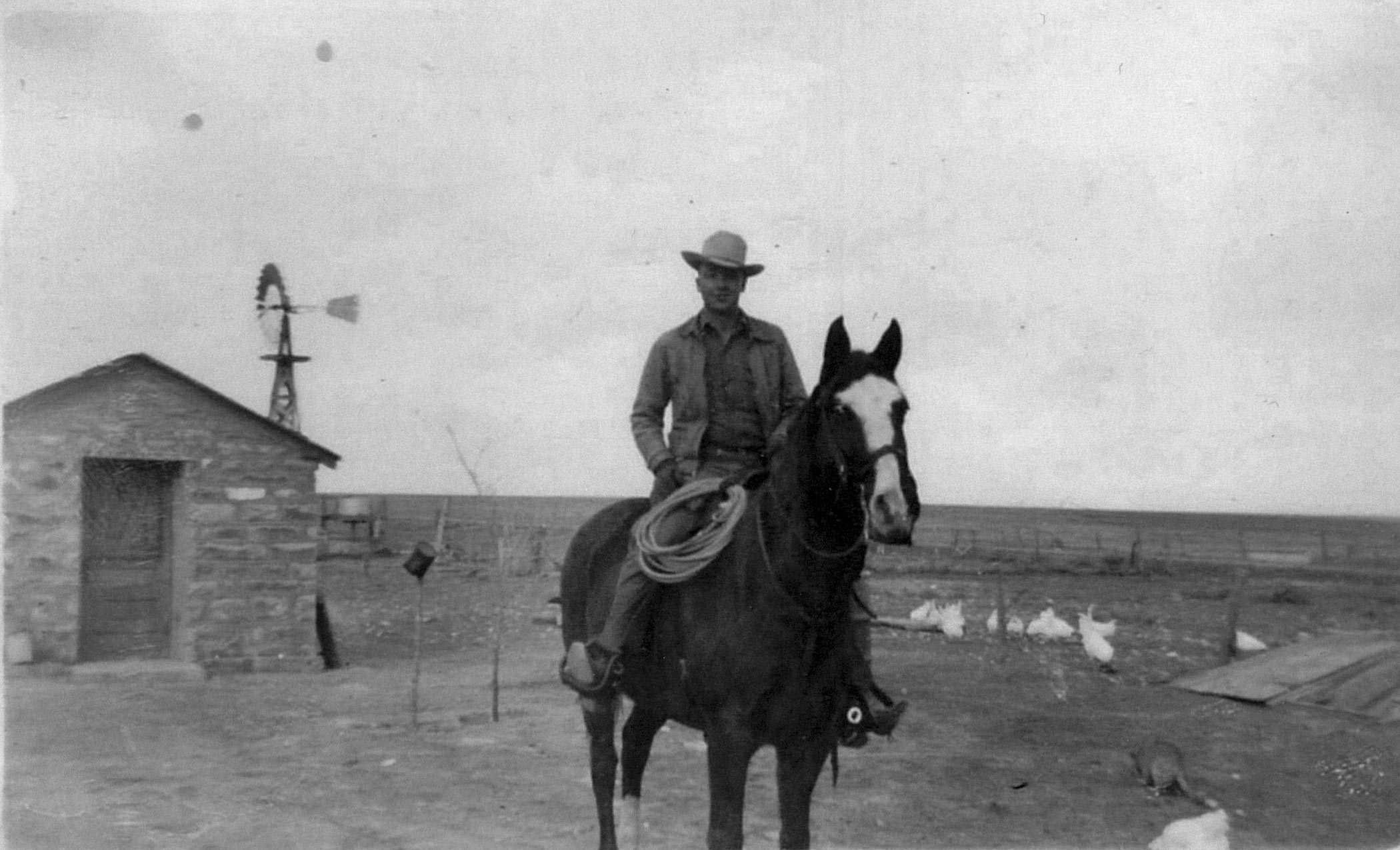
Fulbright Family Farm, Marshall Fubright on horse (5LA.14806)
It has been said that the western story began with Owen Wister’s The Virginian. This is pure nonsense. Dime novels based on western life had begun appearing about 1860, but Capt. Mayne Reid, an Irish soldier of fortune, had written The Rifle Rangers in 1850 and such others as The Scalp Hunters, The War Trail, and The Lost Rancho, to name a few. All this was long before Wister had come West, and some of them were written before he was born.
The flood of dime novels that followed 1860 is a phase of our literature that requires study, not alone as a publishing phenomenon but for its influence on the developing country, for despite the casual way in which the dime novel has sometimes been treated, it had a far-reaching and profound effect.
Following Sir Walter Scott, and borrowing from him, the dime novels did much to influence the behavior of the new generations growing up in the border and western states. Sir Walter Scott, read throughout the East but particularly in the southern states, was a major influence on western behavior. Those who came westward after the collapse of the South at the end of the Civil War brought with them little but their pride, their sense of honor, and something of the code of the cavalier, acquired from Scott.
This same code of behavior was carried along in the dime novels read by many a boy on the farm or in the city before coming West and helped to create some of the ideas as well as situations that developed later.
Far from the wild young ruffian some considered him, the average cowboy came from a Christian, church-going family, and most of his wildness was expressed in charging into town on horseback and firing harmless shots into the air, after which he would head for the nearest saloon and a drink.
The town marshals often were fairly shrewd judges of the character of the men with whom they had to cope. They could quickly distinguish between a healthy young cowhand wanting to blow off some steam and a hard-nosed troublemaker. Marshals also learned to recognize the difference between the would-be gunman and one who was truly dangerous, and acted accordingly.
The boy or man who came West to become the cowboy rode into a land empty but for occasional Indian villages, and while learning much from the land itself, he brought with him a baggage of folklore, song, story, and remembered history, and from this was created a new folklore, a new literary tradition, even new songs.
Along with him he also brought a code, a way of thinking and believing that is still very much alive in America today. Although ignored by many, and dismissed with glib, cynical comments by others, it remains in our subconscious, a strong factor in our social and political thinking.
The cowboy has not ridden off into the sunset, he rides with us, into the future.

